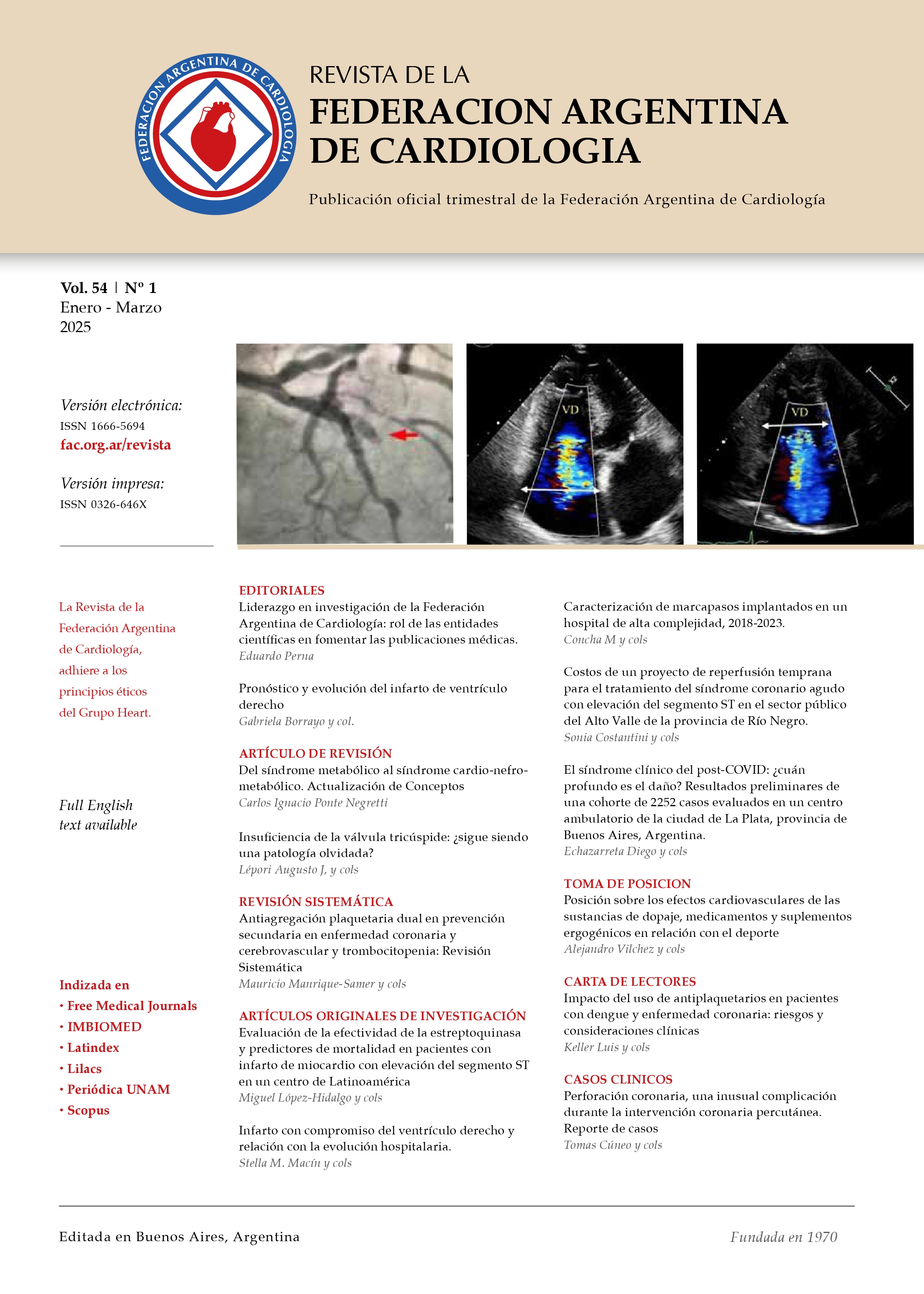Coronary perforation, an inusual complication during percutaneous coronary internvention
Case reports
Keywords:
Percutaneous coronary intervention, Coronary artery perforation, EmbolizationAbstract
Coronary artery perforation (CAP) is a rare but serious complication due to the risk of cardiac tamponade. It can be visible immediately or manifest secondarily in hemodynamic deterioration during the course of angioplasty. The Ellis classification categorizes the types of perforations. We report 3 cases in our series that presented coronary perforation, one due to stent expansion during optimization of its implantation in the main vessel, and two cases due to distal perforation by the coronary guidewire. The three cases were resolved in the ward using different techniques. One CAP was resolved by embolization with Spongostan, another was controlled by releasing a coil and the third was solved with the implantation of two covered stents. Only one of the patients required pericardiocentesis. It is essential to bear predictive factors for CAP in mind, make early diagnoses and resolve using therapeutic options according to the type of perforation.



